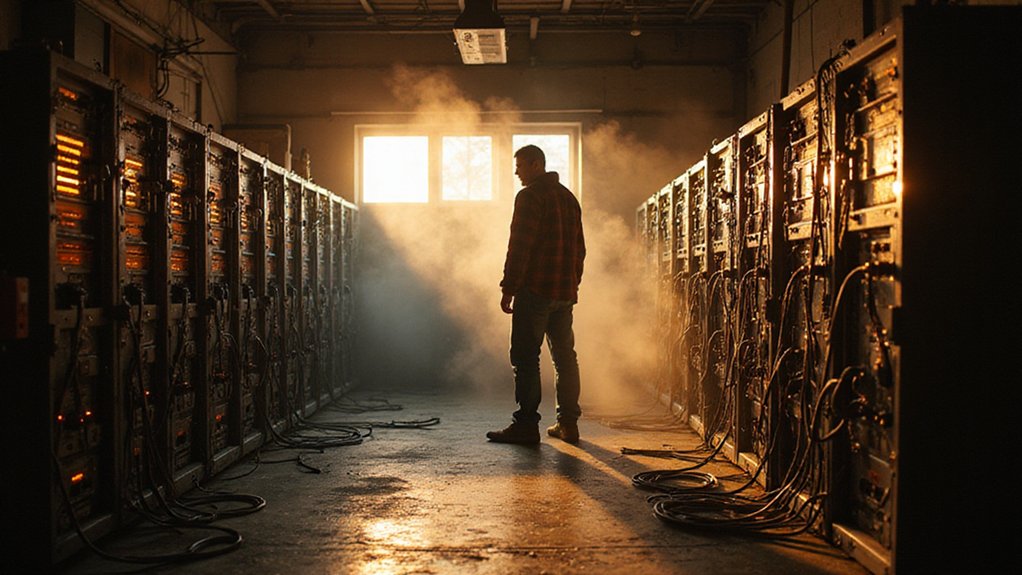Against odds that would make lottery players weep with envy, a solitary Bitcoin miner wielding a modest 2.3 petahash-per-second rig has successfully solved block 903,883 and walked away with approximately $350,000 in cryptocurrency—a feat roughly equivalent to finding a needle in a haystack the size of Texas while blindfolded.
The anonymous miner’s equipment commanded a mere 0.00026% of Bitcoin’s total network hash rate, generating roughly a 1-in-2,800 chance of solving a block daily. Under normal circumstances, this setup would require approximately eight years to achieve such success, making this victory particularly remarkable given the network’s record-high difficulty levels that have rendered solo mining increasingly quixotic.
Against astronomical odds and record-high network difficulty, this miner achieved in one attempt what typically requires eight years of continuous operation.
The reward consisted of 3.173 BTC valued at $349,028 at the time of mining, demonstrating how smaller-scale operators can still compete against industrial mining behemoths despite wielding hash power that represents a laughably small fraction (0.000847%) of dominant pools like Foundry USA. For miners looking to convert their earnings to fiat currency, platforms like BTC Markets offer AUD trading pairs for Bitcoin transactions.
This triumph occurred through Solo CK (CKpool), a non-profit service that charges a 2% fee while eliminating the operational complexity of managing large mining operations independently. Such platforms enable modest miners to pursue solo block attempts without the substantial infrastructure investments typically required for competitive mining.
The hardware likely comprises several older-generation ASIC miners combined to reach the 2.3 PH/s threshold—a deliberate choice favoring cost-effectiveness over cutting-edge efficiency. This approach contrasts sharply with industrial operations deploying exahash-scale power, yet proves that technological gaps need not preclude extraordinary outcomes.
This jackpot continues a peculiar pattern observed throughout 2024, with similar solo mining successes occurring in February (block 883,181 yielding 3.125 BTC) and June (generating approximately $330,000). These victories validate the persistent viability of smaller rigs despite increasingly steep odds imposed by network complexity. The challenging landscape reflects Bitcoin’s 46% increase in hash rate over the past year, making solo mining victories even more exceptional.
The success fundamentally challenges prevailing industry assumptions about mining dominance, illustrating that while large pools control the majority of block rewards, the probabilistic nature of cryptocurrency mining occasionally rewards the audacious few willing to compete against mathematical certainty. Meanwhile, major mining firms have been forced to reduce their operations due to financial pressures, creating an ironic backdrop where smaller players achieve remarkable success.
In an environment where predictability typically reigns supreme, such outcomes remind observers that chance remains mining’s most unpredictable variable.







